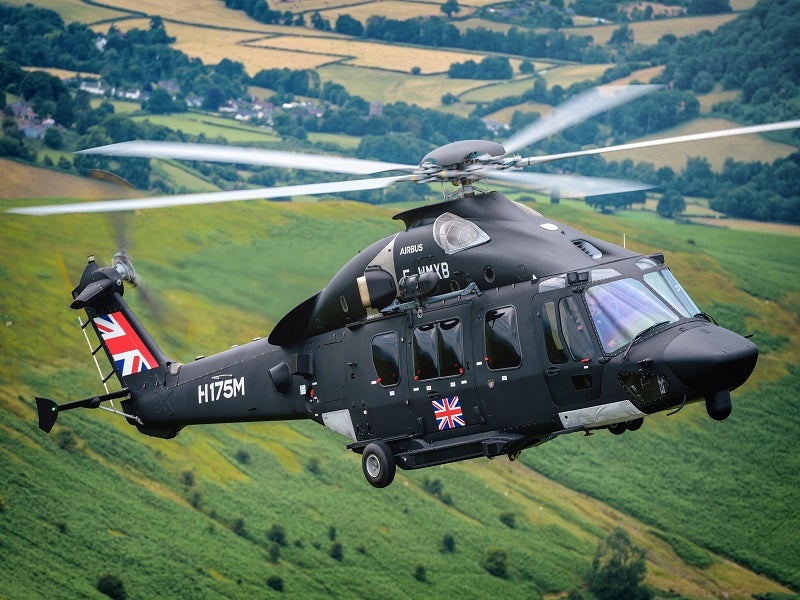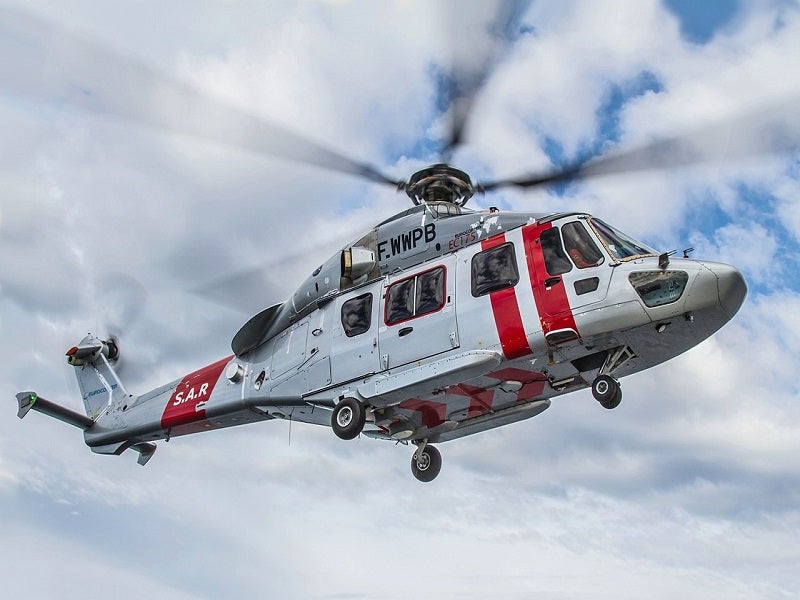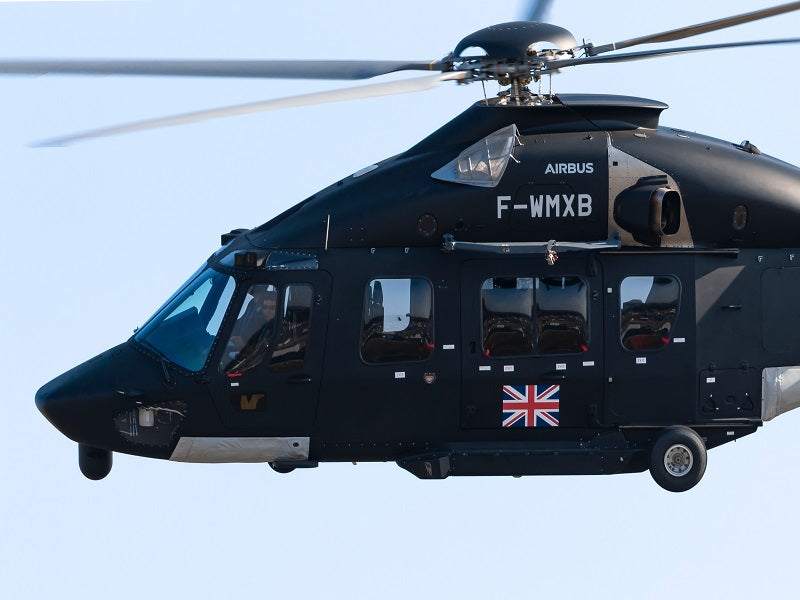The H175M is a military version of Airbus Helicopters’ H175 super-medium-weight, twin-engine civil rotorcraft.
It is one of the contenders for the UK Ministry of Defence’s (MOD) New Medium Helicopter (NMH) requirement.
The multi-role military helicopter is designed to provide optimised performance for a wide range of missions in different operating conditions ranging from sea level to hot-and-high environments.
UK’s new medium helicopter competition details
The MOD seeks to procure a fleet of modern medium-lift support helicopters, under the NMH programme, to replace several existing helicopters that are in service with the Royal Air Force (RAF) and the British Army.
The NMH programme is expected to replace the Westland Puma, Bell’s 212 and 412 models and Airbus Dauphin helicopters.
The requirement to acquire the new helicopter was first revealed in the Defence Command Paper, released in April 2021. In the same year, the MOD shortlisted four companies, including Airbus, Leonardo, Boeing and Lockheed Martin’s subsidiary Sikorsky, to compete for the NMH programme.
Apart from the H175M, other platforms in the competition include Leonardo’s AW149 and Sikorsky S-70 Black Hawk.
H175M Task Force details
Airbus Helicopters launched the H175M Task Force at the Royal International Air Tattoo military air show held at the RAF Fairford in the UK in July 2022.
The task force includes international defence company Babcock, UK-based aircraft ejection seat designer and manufacturer Martin Baker, Canada-based aircraft engine manufacturer Pratt & Whitney, Scotland Spirit AeroSystems and US-based aircraft manufacturer Boeing.
Babcock agreed to serve as the support partner for the H175M at military operating locations.
Martin Baker will provide specialist troop seating and cabin integration services, as part of the task force.
Pratt & Whitney Canada will supply the PT6C-67E turboshaft engines and provide associated support services.
Scotland Spirit AeroSystems is providing detailed design and manufacturing services for the helicopter.
Boeing, which joined the task force in March 2023, will provide aircrew, groundcrew and maintenance training services through its Boeing Defence UK subsidiary if the H175M is selected for the NMH programme.
H175M design and features
The H175M helicopter is 18.06m long and has an overall height of 5.34m. It has a maximum take-off weight of 7,800kg.
The helicopter can carry up to two pilots and 18 passengers with ergonomic back-to-back foldable seats. Its larger doors enable faster and easier entry and exit for soldiers.
The rotorcraft can operate in temperatures ranging between -40°C and 50°C.
The platform offers long-range and all-weather capability to support deployments in challenging conditions. It comes with a full icing protection system.
The H175M provides 12m³ of cabin space, which is claimed to be the largest for a helicopter of its size.
The fuel tanks are fully integrated into the airframe structure, thereby eliminating restrictions on cabin capacity. The design provides high-ground clearance to support operations in different terrain types and does not expose the platform to external threats.
The cabin provides direct access to the 2.3m³ internal cargo area. The helicopter is also armed with two window-mounted machine guns.
Troops can rappel and fast rope on both sides of the aircraft during special forces missions.
In addition to troop transport, the H175M can be deployed to perform missions such as the delivery of special operations forces, combat search and rescue and utility and casualty evacuation/medical evacuation.
Avionics system onboard the super-medium helicopter
The helicopter is equipped with Airbus Helicopters’ Helionix avionics system to provide operators with increased mission flexibility and enhanced safety.
The cockpit layout increases situational awareness during challenging mission profiles, including nap-of-the-earth flight, a very low-altitude near-terrain flight operation performed by military aircraft to avoid detection by enemy forces.
Equipped with four intuitive multi-function electronic displays, Helionix reduces the workload for pilots and frees them to focus on more important tasks during the mission. The system displays only the most important details of a flight phase, with input from the electro-optical system.
Furthermore, the flight deck features a dual-duplex four-axis digital automatic flight control system (AFCS), which ensures precision and stability during flight.
The AFCS system enables automatic recovery in case of pilot disorientation and includes a new detection system to prevent the pilot from entering the vortex ring state. Its traffic alert and collision avoidance system unction helps minimise the risk of mid-air collisions with other aircraft.
The AFCS also ensures easier and safe final approaches to prevent the risk of collision with terrain at low altitudes and a hands-off approach to mitigate risks in the event of failure of one of the engines.
H175M’s electronic warfare system details
An electronic warfare system (EWS) is integrated into the helicopter to enhance self-protection and survivability. The EWS suite comprises a laser warning system and missile approach warning sensors. It also includes chaff and flares countermeasures dispenser pods to avoid detection and attack by adversary air defence systems.
H175M’s engine and performance
The H175M is powered by two proven PT6C-67E turboshaft engines equipped with a dual-channel full-authority digital electronic control system, which protects the engine and reduces the pilot’s workload.
Each PT6C-67E engine delivers a mechanical power of about 1,300 shaft horsepower (shp) and a thermodynamic power output of 1,800shp.
The underfloor standard fuel tanks provide a capacity of 2,067kg, which is the largest capacity in its class.
The helicopter can carry a cargo sling load of 2,700kg in a single hook operation. It can reach a maximum altitude of 15,000ft and achieve a maximum cruise speed of 150kt.
The maximum range of the aircraft with the standard fuel tank is 600nm (1,111km), while the maximum endurance is six hours.






